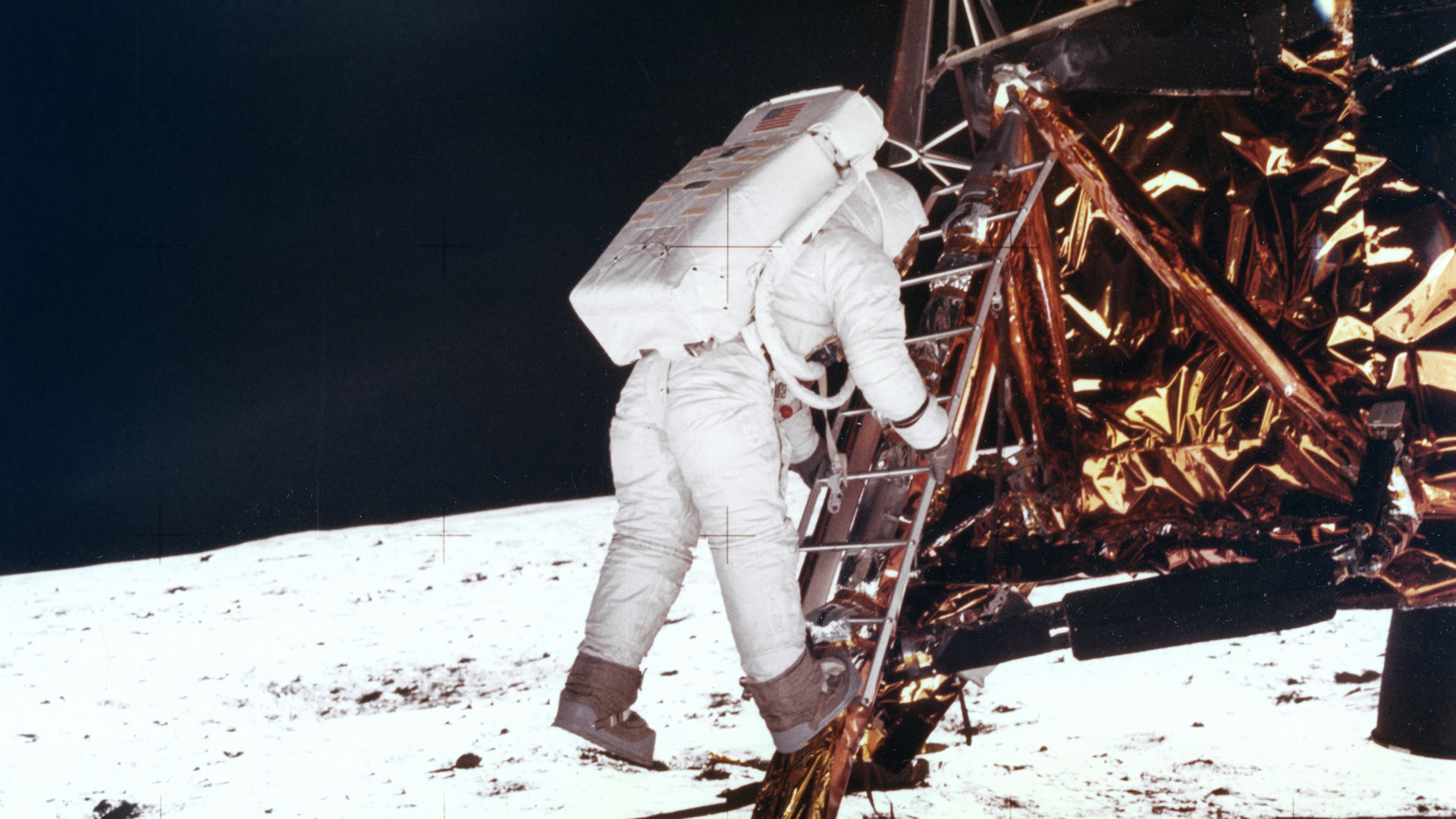Golden Anniversary of First Moon Landing

Fifty years ago this month the United States was preparing to send the first humans to walk on the surface of the moon. Apollo 11 was the fifth manned Apollo flight and lifted off from Florida only nine months after the first, Apollo 7. Although it was the first to land, Apollo was the third to carry astronauts to the moon after Apollos 8 and 10 in the previous December and May, respectively.
Like Apollo 10 which preceded it, the three-person crew selected for Apollo 11 consisted entirely of spaceflight veterans from the two-person Gemini spacecraft program that encompassed ten crewed flights prior to Apollo. The six goals of Gemini were to develop and conduct 1. Long duration spaceflight needed for lunar missions, 2. Proficiency in rendezvous and docking using multiple spacecraft, 3. Controlling Earth re-entry trajectory, 4. Techniques for extra-vehicular activity (i.e. spacewalks), 5. Proficiency of astronauts and ground crews, and 6. Scientific experiments.
Commander Neil Armstrong of Ohio had commanded Gemini 8 with future Apollo 15 moonwalker Dave Scott. The mission nearly took their lives when a rocket thruster became stuck causing their spacecraft to go into an increasingly rapid roll. Armstrong was able to get the spacecraft under control before the spinning motion could cause them to black out and the mission was immediately aborted.
Lunar module pilot Edwin “Buzz” Aldrin of New Jersey, who would join Armstrong on the moon’s surface, flew on the final flight, Gemini 12. He performed a spacewalk using techniques he has worked out in a swimming pool at the McDonogh School in Owings Mills, Maryland. The Gemini 12 commander was Jim Lovell who would later travel to the moon twice, first on Apollo 8 and then on the ill-fated Apollo 13.
Command module pilot Michael Collins flew on Gemini 10 with future Apollo 16 moon walker John Young. Collins performed two spacewalks and the mission also set a new altitude record of 475 miles above Earth. Apollo 11 would go higher by nearly a quarter million miles.
All three astronauts were also military veterans. After graduating 3rd in his class at West Point, Aldrin flew an F-86 Sabre jet in the Korean War and was credited with shooting down two enemy Migs. Armstrong also served in Korea flying 78 missions, including one in which he was forced to bail out of his damaged aircraft. All three later became test pilots before being selected as NASA astronauts.
Apollo 11 lifted off in 1969 on the morning of Wednesday, July 16. Less than three hours later they left their Earth “parking orbit” and were on their way to the moon following a restart of the Saturn V rocket’s third stage engine. Three days later, on Saturday, Apollo 11 was in lunar orbit.
The following day Armstrong and Aldrin entered the lunar module (LM) lander while Collins remained in lunar orbit aboard the command and service module (CSM). The spacecraft undocked and 2 ½ hours later the LM, codenamed “Eagle,” touched down in the Sea of Tranquility, a broad lava plain on the moon’s near side.
The landing was not without drama. Onboard computer overloads caused it to issue several alarms as the descent continued. Boulders and a large crater in the landing zone forced Armstrong to take over manual control, flying the LM like a helicopter to a smooth area and using up precious fuel. At landing there may have been as little as 30 seconds of fuel remaining. Nevertheless, Armstrong and Aldrin became the first humans to land on the moon. The date was Sunday afternoon, July 20. After midnight in Houston, Armstrong exited the LM and descended the ladder to the lunar surface. A television camera on the outside of the LM shared the historic first steps with an estimated 125 million viewers in the U.S. and over 500 million worldwide.
Armstrong flubbed his prepared line, saying “That’s one small step for man, one giant leap for mankind,” making man and mankind seem like two words for the same thing – the entire human race. He meant to say “step for a man” referring to himself.
Aldrin joined Armstrong on the surface to collect rock and soil samples, take photos, plant an American flag and set up scientific instruments. During the moonwalk the astronauts even took a call from President Richard Nixon in the White House. In all, the LM hatch was open for about 2 ½ hours.
On Monday, July 21, the LM lifted off and rendezvoused with Collins in the CSM, nicknamed “Columbia.” They transferred the precious rocks and film and discarded the Eagle in lunar orbit. They headed for Earth and splashed down in the North Pacific Ocean on Thursday, July 24.
Because of the uncertain nature of life on the moon, including bacteria, viruses or diseases, the astronauts were immediately quarantined until August 10.
Astronauts would return to the moon 5 more times before the end of the lunar landing program. The last boot print left in the lunar soil was made in 1972 during Apollo 17. No human being has returned to the moon since.
–Curt Roelle
